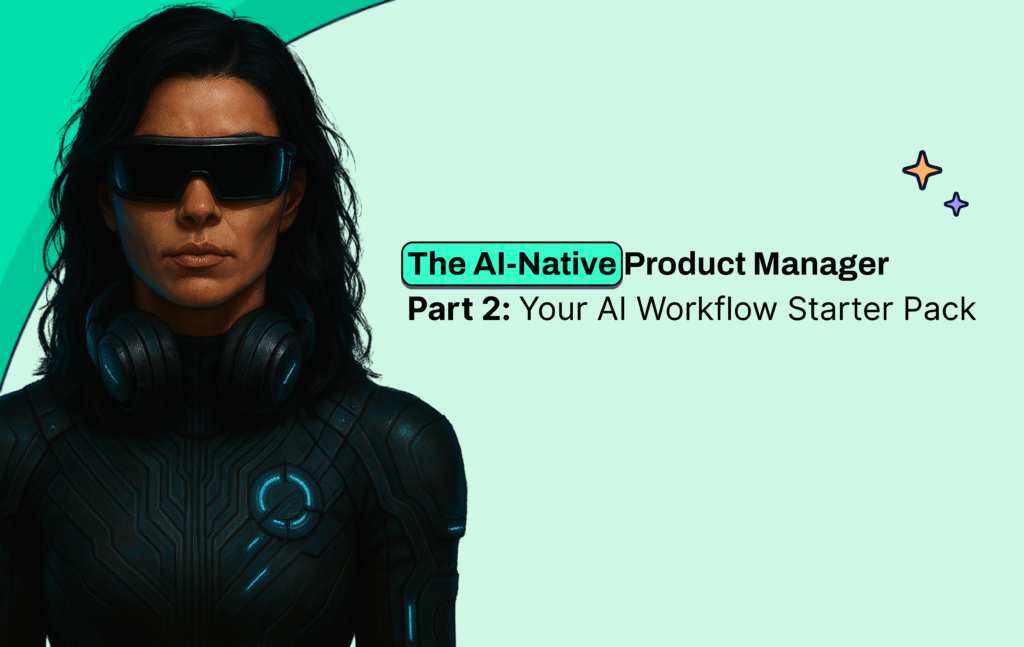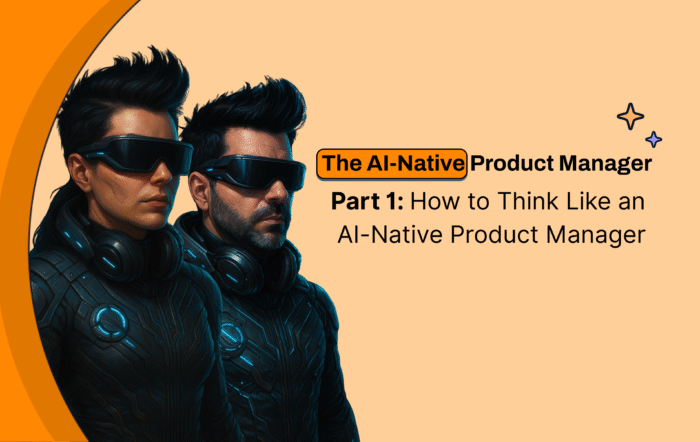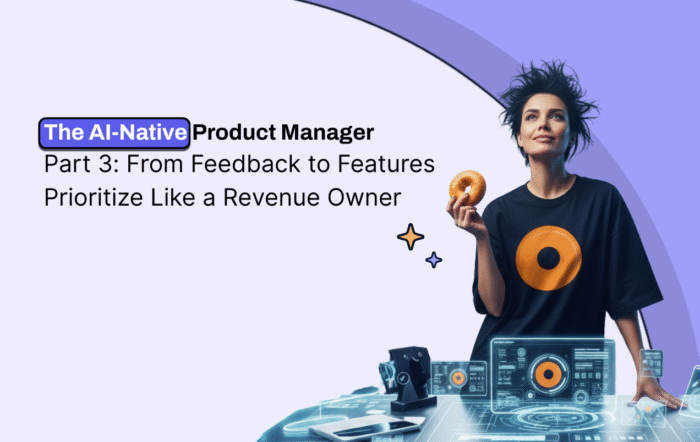Key Takeaways
- You don’t need more AI tools. You need to know where AI fits in your decision-making flow.
- There are four high-impact phases where AI makes your product work sharper, not just faster.
- Each section includes examples, insights, and one move that can save you hours of second-guessing.
Why This Isn’t About Prompts (and Why It Still Kind Of Is)
This post isn’t about learning to “prompt better.” That’s not the point. But prompting is how you interface with AI. It’s your side of the conversation-and most product managers are having the wrong one.
When you ask vague questions, you get vague answers. When you treat AI like a shortcut to writing specs or summarizing tickets, you’re missing the bigger win: letting it reduce your cognitive load at the right time in your workflow.
This post maps where AI fits into actual product work – not your tool stack. If you’re looking for specific tools to support these workflows, check out our companion guide: AI Tools Product Managers Should Use Daily in 2025. It’s structured around four core moments where thinking is hard, time is tight, and AI can give you traction:
- Discovery
- Prioritization
- Planning
- Validation
1. Discovery: Turn Messy Feedback into Strategic Input
What it solves:
You have feedback from 14 places. Everyone’s shouting. You’re overwhelmed.
Use AI to:
- Identify themes that show up across sources, not just one
- Compress voice-of-customer signals into business language
- Spot where user problems are misaligned with what your team thinks is happening
Practical move:
- Feed in 20 support tickets and 2 Gong transcripts. Ask, “What are users trying (and failing) to do, based on this?”
Why it matters:
Discovery isn’t about volume. It’s about surfacing real problems that justify product work. AI helps you go from anecdote to signal with context intact.
Trap to avoid:
AI will surface what’s said often. You need to ask what’s said by the right segments (paying users, churning accounts, high-LTV prospects).
2. Prioritization: Trade Noise for Business Clarity
What it solves:
You know what customers want. But what matters most to the business?
Use AI to:
- Cross-reference customer requests with deal stage, ARR, or churn risk
- Score themes by business impact not just emotional pull
- Reframe input from “we need this” to “this maps to revenue protection or upside”
Practical move:
- Paste in product feedback tagged with account data. Ask, “Which of these requests likely impacts expansion or retention, and why?”
Why it matters:
Product managers aren’t just prioritizing what’s useful they’re prioritizing what’s profitable. AI helps you pull feedback into that conversation.
Trap to avoid:
Don’t let AI make the final call. It should surface hypotheses. Judgment still belongs to you.
3. Planning: Build Faster, Without Starting From Zero
What it solves:
Blank spec docs. Cross-functional ping-pong. Overwriting the same doc three times.
Use AI to:
- Draft first-pass specs based on real problems and constraints
- Run design reviews and stakeholder Q&A simulations
- Translate outcomes into Jira-ready stories or PRD outlines
Practical move:
- Give it your validated theme + business goal. Ask, “Draft a one-pager with user story, success criteria, and open questions.”
Why it matters:
Writing isn’t the problem. Thinking clearly before you write is. AI accelerates the loop from “idea” to “plan” without shortcutting rigor.
Trap to avoid:
Don’t accept first drafts. Use AI to start with structure, not end with polish.
4. Validation: Test Ideas Pre-Launch (and Post-Ship)
What it solves:
You shipped. You guessed at impact. And you’re now in reactive mode.
Use AI to:
- Summarize sentiment from early user reactions
- Compare adoption patterns against intent
- Catch missed expectations in post-launch feedback
Practical move:
- Paste in survey responses + usage metrics. Ask, “What are people misunderstanding or not using as expected?”
Why it matters:
PMs need a feedback loop that works fast without waiting for quarterly reviews. AI gives you early reads before customers churn or escalate.
Trap to avoid:
AI is tone-deaf to sarcasm and subtlety. Validate anything sensitive with real humans.
The One Move That Saves You Hours in Backlog Grooming
Here it is:
“From these 50 backlog items, which themes show up most across support and sales input? Group and rank them by customer value.”
This isn’t about auto-prioritization. It’s about eliminating the reading and sorting that makes grooming painful and gives you more time to think critically.
The Bigger Shift
The AI-native product manager doesn’t just “use AI.”
They know when to use it and why.
They delegate the cognitive weight of messy, repetitive thinking so they can focus on decisions that matter. And they do it inside the real product workflow, not in a separate playground.
Up Next
Coming up next: how to stop writing weak prompts and start thinking like you’re delegating to a peer with 10x recall.
Here’s what’s coming next in Post 3: From Feedback to Features – Prioritize Like a Revenue Owner:
- How to use AI to turn scattered feedback into revenue-linked product bets
- How to surface and elevate GTM insights your roadmap has missed
- The real workflow to connect customer pain to monetizable opportunities


